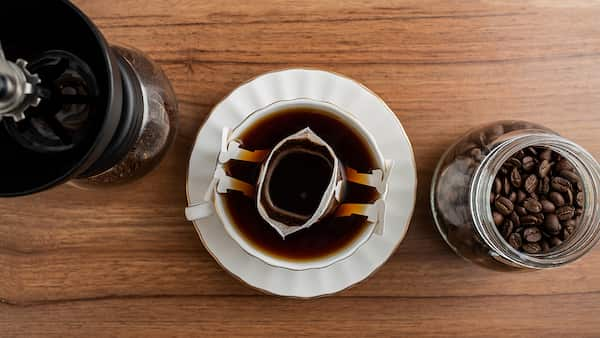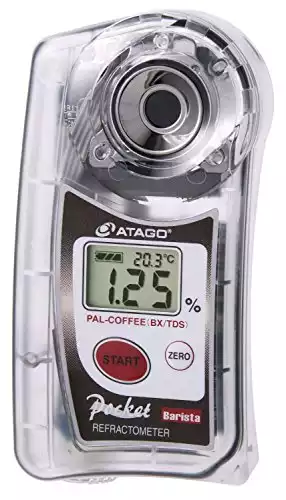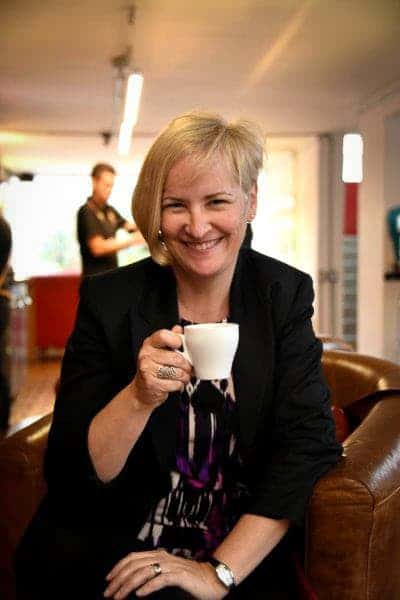How A Coffee Refractometer Can Up Your Brewing Game
Coffee refractometers are changing the way coffee is prepared and evaluated. They move roasters to improve their roast profiles, and they shape how coffee shops train their baristas.
In fact, a coffee refractometer has probably improved the coffee you drink at your local café.
And yet, when you mention this tool to someone, the response is generally the same: “What in the world is a coffee refractometer?”
Read on to find out how this tool can improve your coffee rituals.
But First…What Are Total Dissolved Solids?
Before we get into what a coffee refractometer is, let’s talk about TDS. Although it sounds like an educational television channel, it’s actually a fundamental concept in coffee brewing and extraction.
TDS stands for total dissolved solids. It’s simply what got extracted into the water when you brewed your coffee.
The dissolved solids are what you taste and feel when you sip your coffee. Basically, it’s how much coffee is in your coffee. It’s what makes coffee taste good…or bad.
If you underextract your coffee, it will often taste sour, and the body will be too light. Overextracting can bring out the bitterness. Yet, it can be difficult to determine the finer details just by tasting coffee. That’s where a coffee refractometer comes in.

What Does A Coffee Refractometer Do?
Refractometers are tools that measure how light bends (refracts) when it passes through the air and into a liquid.
In plain English, that means when light hits your brew, it gets deflected or shifted to one side. How far it moves tells you just how much TDS are in your coffee.
Scientific tools like these help coffee professionals and enthusiasts alike to get the best extraction and develop an optimal coffee recipe.
This type of device is not new. They are used in everything from the food industry to jewelry making. Applying a refractometer to coffee, though, is relatively new…and getting more popular. A coffee-specific refractometer can get you the most accurate results.
Why is it useful?
Put simply: to acquire more information about your brew to allow for enhanced precision.
Once you know the amount of solids in your brewed coffee sample, you can use this information to calculate the extraction yield. This helps you to understand scientifically and mathematically why your coffee tastes bad. Or good.
Of course, coffee refractometers can’t taste your coffee for you. We’re not there yet with machines. But they let you know the numbers.
You decide if the coffee was good or not, and then you look at the data to know why. What did you do right? Having those precise numbers tells you what you should do in the future to get consistent results.
As I mentioned, once you know the TDS, you can calculate the extraction yield or percentage or what you got out of your ground coffee. You’ll need the TDS, the brew weight, and the beverage weight for the extraction yield.
The equation is given below:
Brewed coffee weight (g) x TDS % ground coffee weight (g) = extraction percentage or extraction yield.
You can also use software to just pop in the measurement and get the math done for you.
Who would use it and why?
- Roasters test beans using a refractometer to see if the roast development is even.
- A barista – or team of baristas – will use it to determine a brewing recipe.
- Coffee enthusiasts use it as a guide to get the best brew at home.
Check out the video below from the winner of the 2012 World Brewers Cup to see the precision of refraction software in action:
Using A Refractometer For Measuring TDS
While the science behind it (and the math!!) might make you hesitate to use a refractometer, it’s really quite easy.
You simply add a few drops of brewed coffee into the sample well. Then it will pop a number out at you, which is the TDS.
Here we’ve broken it down step by step:
Step 1: Calibrate your refractometer
- Turn the refractometer on.
- Use the dropper to add distilled, room-temp water to the well.
- Close the lid and wait a few seconds until water reaches the correct temperature.
- Set the refractometer to zero.
- Clean the refractometer lens with a sterile alcohol wipe.
Step 2: Prepare coffee
- Put a few ounces of coffee in a cup.
- Stir the coffee well.
- The coffee should be at room temperature, below 100 degrees Fahrenheit. If necessary, use a filter (see below).
Step 3: Add coffee
- Suck up a few ml of coffee sample into the syringe. (If you need to use a filter, screw it on beforehand). *
- Place coffee in a clean cup.
- Using a clean dropper, place a few drops of coffee in the well.
- Close lid. Wait about 10 seconds.
- Press go. Take reading.
- Take several readings to ensure accuracy.
* If you brew with a metal filter or are examining a shot of espresso, some solids will not dissolve in water. You need to filter them out to get an accurate reading. Use a filtered syringe to get a clean reading. This is not necessary when brewing with a paper filter.
Step 4: Clean the refractometer
- Clean off coffee with a paper towel
- Clean well with an alcohol swab
As you try different brews, keep track of the specific measurements, the result, and the TDS. When you consistently hit on a TDS that corresponds to a great brew, that’s your number.
What other materials do you need to use your refractometer?
- Distilled water
- Alcohol to wipe down sensor
- Dropper for liquids
- Syringe
- Small cups and paper towels
Optimal TDS Readings Per Brewing Method
To get the best taste for each brewing method, what TDS range should you aim for?
- French Press: 1.4-1.7
- Espresso: 8-12
- Pour over: 1.2-1.5
- AeroPress: 1.4-1.7
Should you buy a coffee refractometer?
Do you need a coffee refractometer? Before you say yes, know that they’ll cost you anywhere from a couple of hundred dollars to around $800.
For coffee shops and roasters, that investment may seem small when compared to the benefits of getting their team synced to brew consistently good coffee.
Of course, you can still brew good coffee without a refractometer.
And in the end, the refractometer can’t tell you if the coffee was good. We still need humans for that.


